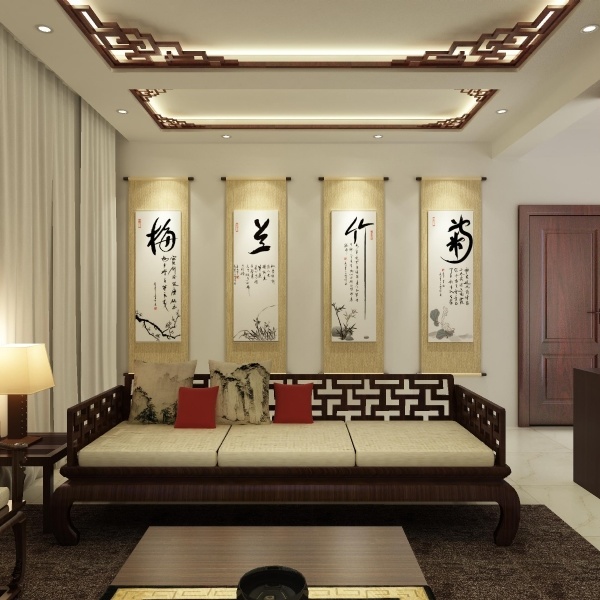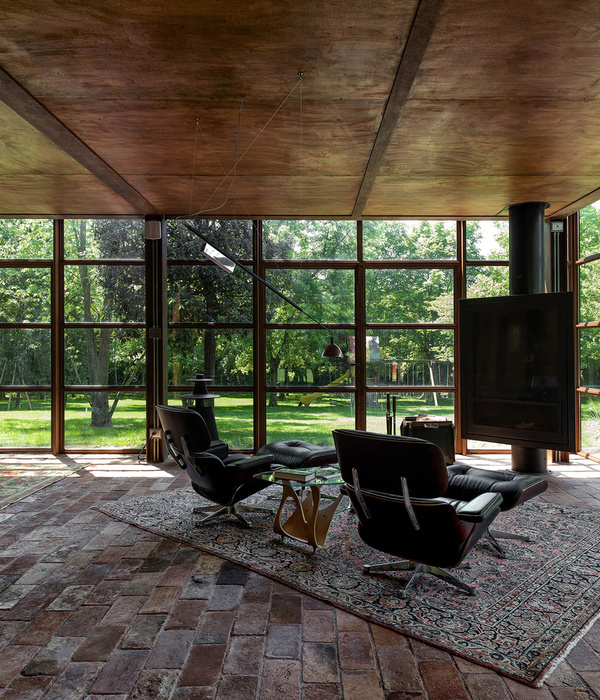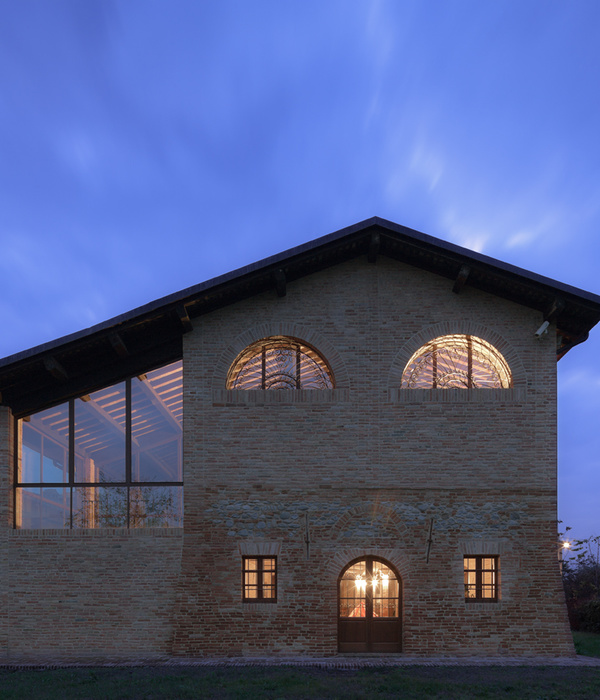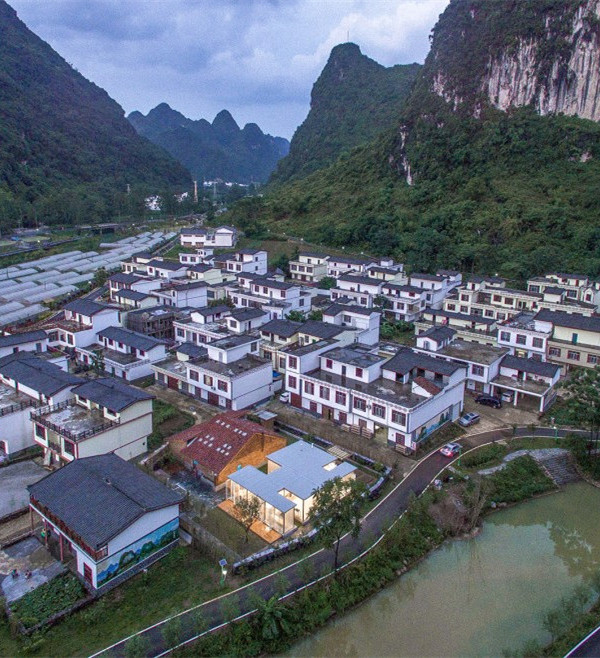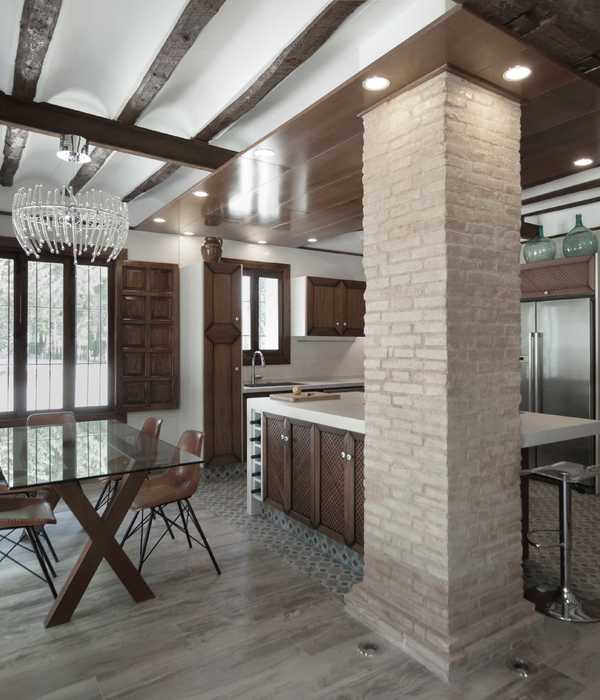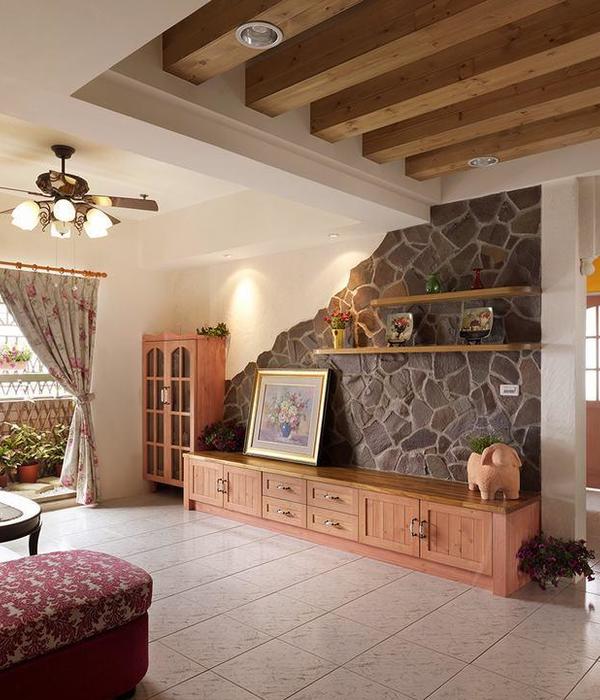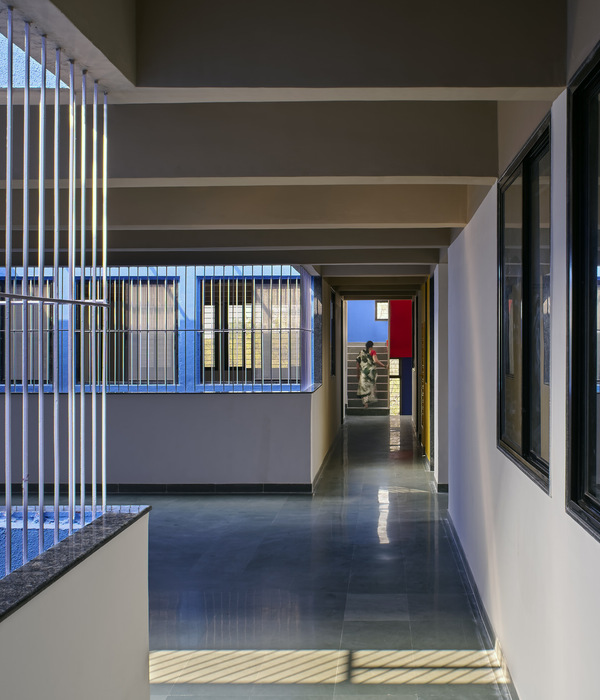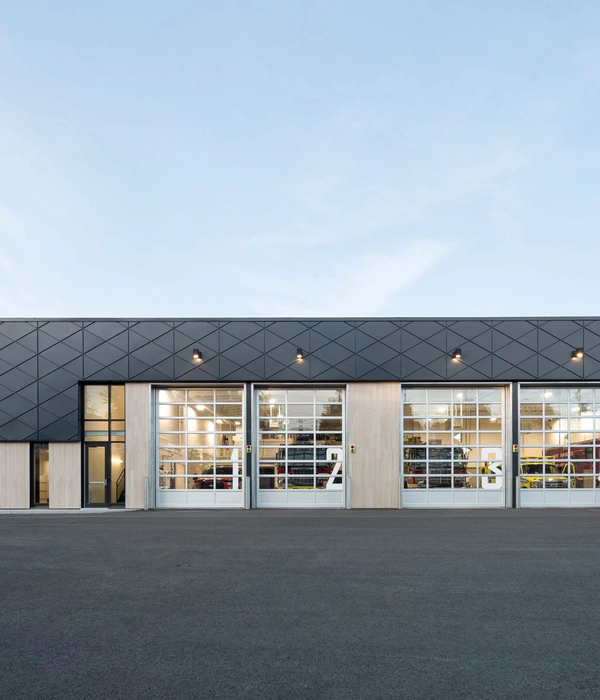项目位于西班牙巴伦西亚市中心的Calle Sorní街区,前身是一处老旧的废弃空间,经改造后则变身为致力于人们健康和护理的新诊所。对于Alejandria诊所的工作人员来说,前总部的空间已经无法满足发展的需求,因此,诊所与整个团队都迫切地需要一个能够迎合他们自身理念的新环境,在那里他们可以作为专业人士继续成长,并能够为他们的客户提供优质的服务和体验。
The project for the new Clinica Alejandria located on Calle Sorní in the heart of Valencia (Spain), transforms an old obsolete and abandoned space into a new place dedicated to health and care of people. Due to the space limitations of the previous headquarters, the Clinica Alejandria and its entire human team needed a new environment in accordance with their philosophy where they could continue to grow as professionals and be able to offer a quality service and experience to their clients.
▼视频,video ©Agencia Salinas
将医学和教育联系在一起 CONNECTING MEDICINE AND EDUCATION
新诊所中展开的活动主要涉及两个领域:医学与教育。因此,空间的设计需要引导并促进这两个不同学科间的互动,进而为患者提供专业的、高质量的治疗体验。设计策略主要体现在两个不同楼层的空间划分与功能组织上。下部楼层中容纳了接待空间以及诊室,上部楼层则为专业教育空间,旨在为诊所的医疗团队与对本诊所课程感兴趣的专业人士提供进修的机会。
This new Clinic had to base its activity on two main fields: medicine and education. This condition has provided an opportunity to create a unique space in which both disciplines constantly interact, and patients can be attended with highest quality and professionalism. The strategy was based on dividing and organizing the program on two levels. On the lower level are located the reception and the boxes for clients. The higher level is intended for the education of both the medical team and other interested professionals.
▼接待空间,reception area ©David Zarzoso
入口和接待空间是整个项目的核心。在这里,柔和的几何线条、轻柔的光线、庭院中的植被,以及温暖的材质共同营造出舒适放松的氛围,引导着人们往空间内部探索。一处宛如希帕蒂娅神庙般的通高空间构成了诊所的主要部分,在这里,医学和教育紧密地连接在一起,让Alejandria诊所始终走在医疗专业的前沿。
The entrance and reception space becomes the heart of the project. A place in which the geometry, the light and the vegetation of the central patio and the warm materiality welcome you and make you move towards its interior. Hypatia becomes one of the main spaces of this project. A double-height space where medicine and education connect to achieve the most advanced knowledge that a clinic of these characteristics requires.
▼柔和的材质与曲线营造出亲密的氛围, Soft materials and curves create an intimate atmosphere ©David Zarzoso
▼接待台细部,detail of the reception desk ©David Zarzoso
质朴的材料与柔和的曲面 SINCERE MATERIALITY AND CURVED SURFACES
设计的初心旨在为诊所营造独特的空间氛围,并赋予空间价值与意义,这种理念最终以弧线与曲面的几何形式表现出来,成就了空间中最具辨识性的半圆形拱门。在材料方面,粘土砂浆与胡桃木结合,创造出富有质感的肌理,进而形成了真诚、亲密的空间氛围。细腻的饰面伴随着清晰而简单的几何形状,宁静的气息在空间中流动,生活之美也变得触手可及。
From the beginning, we wanted to design significant spaces creating a special atmosphere characterized by curved shapes and round surfaces such as the semi-circular arch. The use of clay mortar in combination with walnut wood generate a sincere, close and “tactile” materiality. This “skin” of the interior spaces accompanied by a clear and simple geometry aims to create an environment where silence can be breathed, and beauty can be felt.
▼半圆形拱门营造出空间的仪式感,the semicircular arches create a sense of ritual in the space ©David Zarzoso
▼庭院引入景观与光线, the courtyard introduces landscape and light ©David Zarzoso
落成后的Alejandria诊所就如同巴伦西亚市中心一片宁静的绿洲。对中性材料与天然木材的选择,对细节的关注,加之对自然光线以及植物的巧妙运用,这一切共同塑造了诊所的形象,以空间的方式展现出Alejandria诊所先进的理念与行事方式。
An oasis of calmness in the centre of Valencia. The use of a neutral materiality and natural wood, the attention to details and the incorporation of natural light or vegetation are some of the aspects that have allowed the new image of this clinic to be shaped in accordance with its philosophy and way of doing things.
▼粘土砂浆与胡桃木结合, clay mortar in combination with walnut wood ©David Zarzoso
▼宁静的室内氛围,peaceful interior atmosphere ©David Zarzoso
▼楼梯细部,details of the staircase ©David Zarzoso
以用户体验为基础 ARCHITECTURE BASED IN THE USER EXPERIENCE
设计师认为对于此类医疗空间来说,以患者的角度出发营造健康的环境是第一位的。因此,设计的核心理念之一就是重视诊所中的公共空间,并将其视作与医疗空间同等重要的部分。为此,接待空间与室内交通空间在整个项目中的占比要大于设计规范中要求的必要比例范围。空间环境的舒适度与自然光线以及植被有着紧密的联系,良好的环境氛围能够大大改善患者们的看诊体验。
From the beginning we knew how important it is in a project of these characteristics to create a healthy environment designed from the user experience point of view. In this sense, one of the fundamental goals of the project has been to establish the same importance to the common spaces as to those destined for patient consultation. For this, reception and circulation spaces have been designed with proportions greater than what is strictly necessary. Comfortable and healthy places to stay in connection to natural light and vegetation that allow improving the user experience through a special atmosphere.
▼诊室前等候区, waiting area in front of the boxes for clients ©David Zarzoso
▼诊室内部, interior of the box for clients ©David Zarzoso
▼定制木制家具, custom wooden furniture ©David Zarzoso
此外,ERRE arquitectura还参与到了天然木制家具的设计中,力求在不影响专业性的同时,让医生和病人之间建立一种更个性化、更亲密的互动形式。最后,对于诸如皮肤科等技术不断进步、需求不断增加的学科,则要求空间的设计具有一定的先进性与灵活性,能够让诊所不断适应新的医疗和专业挑战。高效的通风系统能够持续更新空气,保持健康的环境,并适应当前的防疫需求。此外,不同透明度的玻璃则可以灵活满足不同空间对私密性的需求。
Moreover, we have collaborated on the design of the furniture, in which, using natural wood we have tried to establish a new form of more personal and close service between the doctor and the patient without compromising their professionalism. Finally, in a sector such as dermatology in which advances are constant and demands are increasing, it was important to be able to create a clinic that would have the most advanced technology, as well as allow the necessary flexibility to be able to adapt to new medical and professional challenges. Therefore, ventilation systems have been included that allow a constant renewal of air, maintaining a healthy environment and adapted to current health requirements. In addition, glass has been used to provide privacy and flexibility of use depending on the situation.
▼治疗空间,interior of the treatment room ©David Zarzoso
巧妙的设计使Alejandria诊所在同类型项目中脱颖而出,医疗与教育的结合,让其成为专业领域的标杆,并增强了诊所与其他专业人士联盟的可能性,因此,Alejandria诊所始终能够走在医学进步的最前沿。
All this makes the new Clinica Alejandria a project that is allowing them to differentiate and position themselves as benchmarks in the dermatological clinic sector, enhancing the possibilities of alliance with other professionals and placing themselves at the forefront of medical advances.
▼底层平面图,ground floor plan ©ERRE arquitectura
▼二层平面图,first floor plan ©ERRE arquitectura
{{item.text_origin}}



